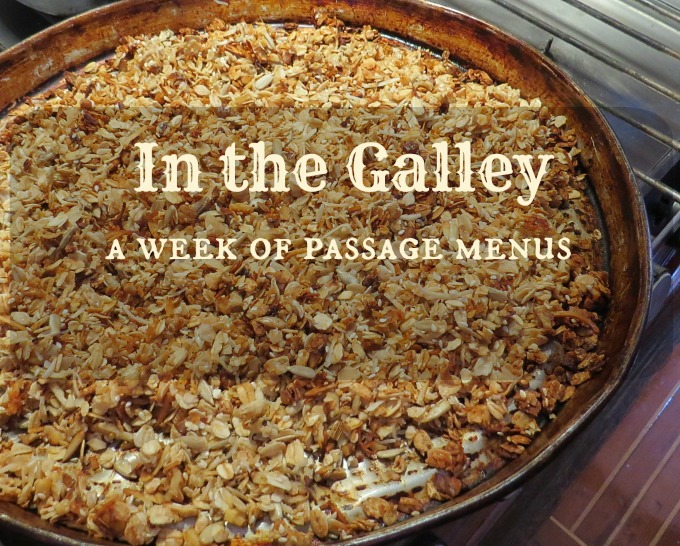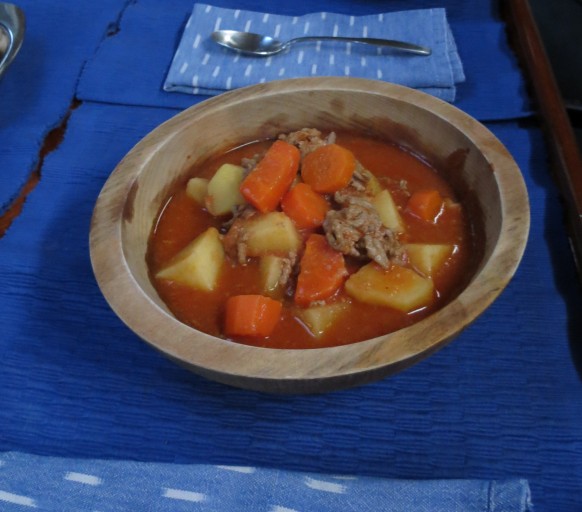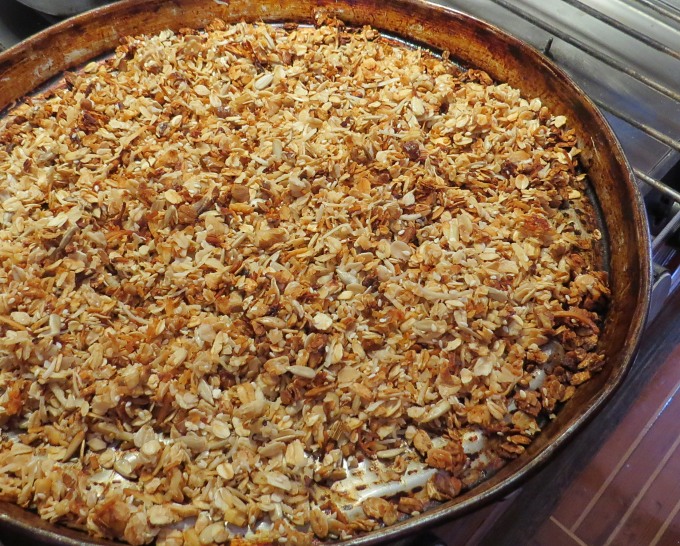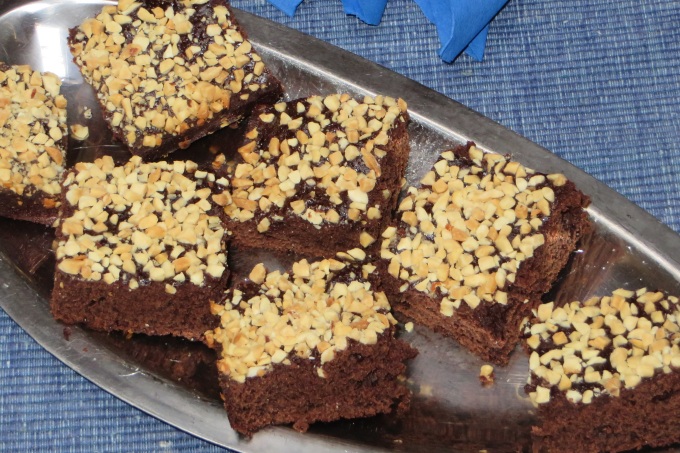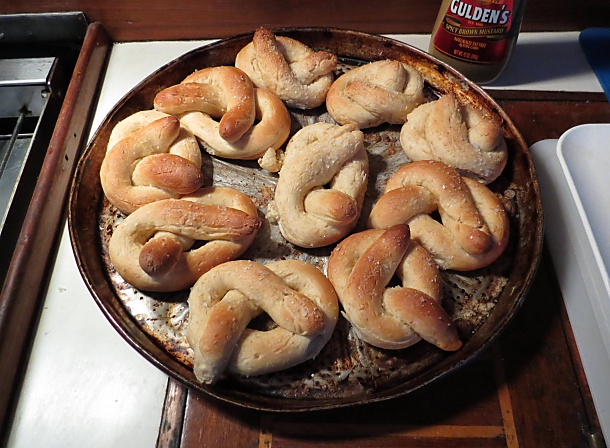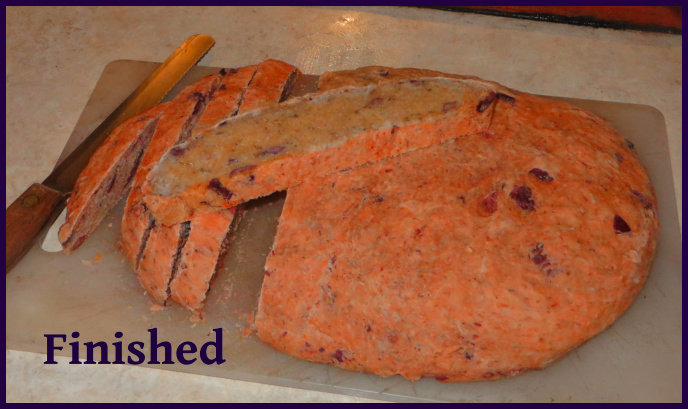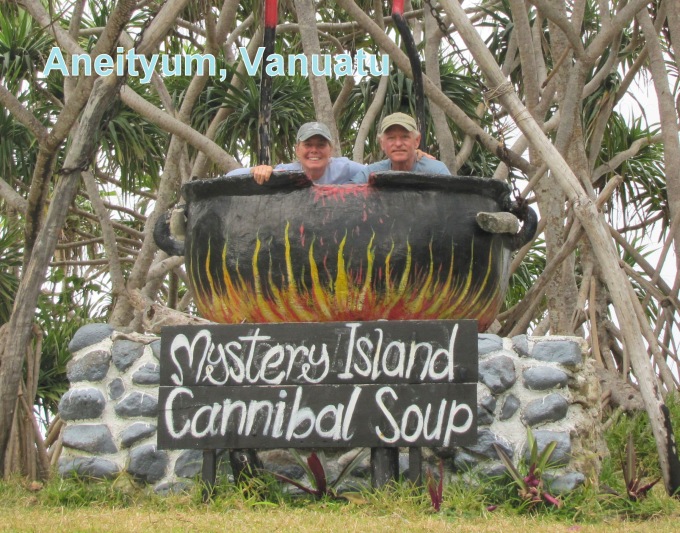A Week of Passage Menus
/I've written about provisioning and provided a few recipes along the way, but I've never offered the types of menus I rely on when we're on passages. Much depends on the weather we're experiencing. Are we on a heel? Is it really cold? Is it calm or stormy? Baking is best done when it's calmer and very comforting when it's cold. We bake less as we get into warmer climates. One pot meals are best when the ride is bumpy. We adapt to the conditions, but try to have at least one hot meal a day. Here's a week of menus I use regularly on Nine of Cups.
Day 1
Breakfast – Hot oatmeal with milk and brown sugar Lunch – Grilled cheese sandwiches with chips and pickles Dinner – Lemay Special with crackers and cheese Night Watch - Leftover Lemay Special Snacks – Chocolate cupcakes from a mix; granola bars
Day 2
Breakfast – Yogurt with home-made granola Lunch – Fried egg sandwiches with home fries Dinner – Tuna and Mac (You can make this meal with any kind of pasta and substitute chicken for tuna. We find that penne, shells or macaroni work best. It's another one-pot meal.) Night Watch – Cupcakes and hot tea Snack – Crackers and cheese; sliced oranges
Day 3
Breakfast – Cheese omelet with toast Lunch – Ramen noodles with crackers and cheese Dinner – Franks and beans (see notes below) Night Watch – Brownies and tea Snack – Apples; Brownies
Day 4
Breakfast – Pancakes with maple syrup Lunch – Rice Salad with smoked chicken Dinner – White chili with corn muffins Night Watch – Left over white chili Snack – Shared chocolate bar; popcorn
Day 5
Breakfast - Crazy mixed up eggs with toast; coffee and tea Lunch: Corn Chowdah (if there's fish, it's fish chowdah) Dinner – Cottage Pie Night Watch –Reheated chowder Snack - Peanuts and raisins; chocolate pudding
- 3 eggs
- 3 cups previously boiled potatoes, cut into bite-sized pieces
- ½ onion, diced fine
- 1 Tbsp oil
- 1 Tbsp butter/margarine
- Salt and pepper to taste
- Cook onions in oil till tender. Add butter and when melted, add potatoes. Stir and heat through. Add eggs one at a time and stir till all are cooked and “mixed up” with the potatoes. Serve hot with toast.
Day 6 Breakfast – English muffins with blueberry jam; coffee and tea Lunch – Tuna wraps with cole slaw Dinner – Terriyaki chicken with veggies (carrots, onions, cabbage) served over rice Night Watch – Leftover Terriyaki chicken Snack – Carrot sticks with honey dijon dip; mixed nuts
Honey Dijon Dip 1 cup (250gr) mayo 1 Tbsp (15 ml) honey 1 Tbsp (15 ml) Dijon mustard
Blend ingredients till smooth. Use as a veggie dip or salad dressing.
Day 7 Breakfast – Yogurt with canned peaches and a granola bar Lunch – Chicken salad sandwiches with carrot sticks Dinner – Spaghetti with mushroom and sundried tomato sauce and grated Parmesan Night Watch – Left over pasta Snack – Pretzels (edible knots); orange slices
Notes:
- With a little imagination and creativity, these menus can be modified, recycled or mixed and matched every week or so.
- One pot meals are easiest on the first days of a passage. For franks and beans, for instance, I cut the franks into bite size pieces and cook them in a saucepan. Once cooked, I add the beans on top and heat till piping hot.
- If we anticipate bad weather, I usually whip up a kettle of soup in advance.
- Unless it's raining or stormy, we eat most every meal in the cockpit. I tend to serve meals in our wooden bowls. They're sturdy, don't conduct heat when holding the bowl in our laps and the bowl helps to keep food contained rather than letting it blow away or slop over.
- Because we only use a fridge and not a freezer, I rely on canned (preserved) chicken after our first week at sea.
- Menus shown are for a week after the fresh meats are gone.
- I make up a large batch of granola before we leave and store it in a plastic canister. I also make up basic coffee cake/pancake mix and muffin mixes before I leave. I mark and store them in big ziplocs. I just add liquid ingredients when I'm ready to use them.
- I've included meals (usually leftovers) for night watches as we always have the munchies during the night. With night watch in mind, I many times make extra for dinner.
- We sail dry, so no alcoholic beverages are served. I stock UHT milk, coffee, tea, juices and sparkling water. We drink lots of water on passage.
- If David catches a fish, the whole menu changes.


